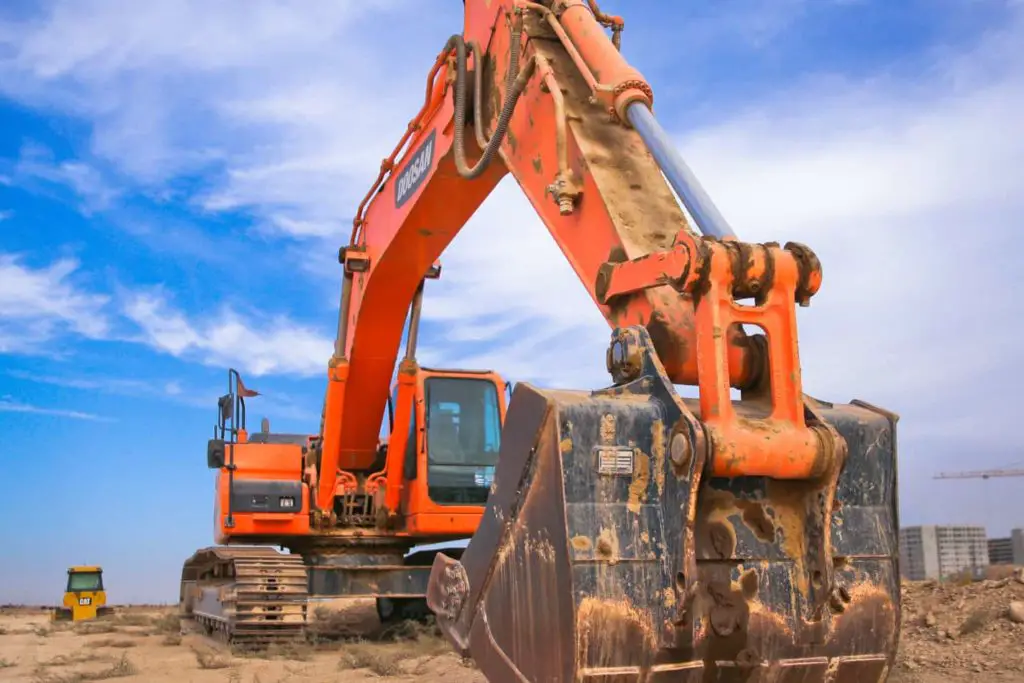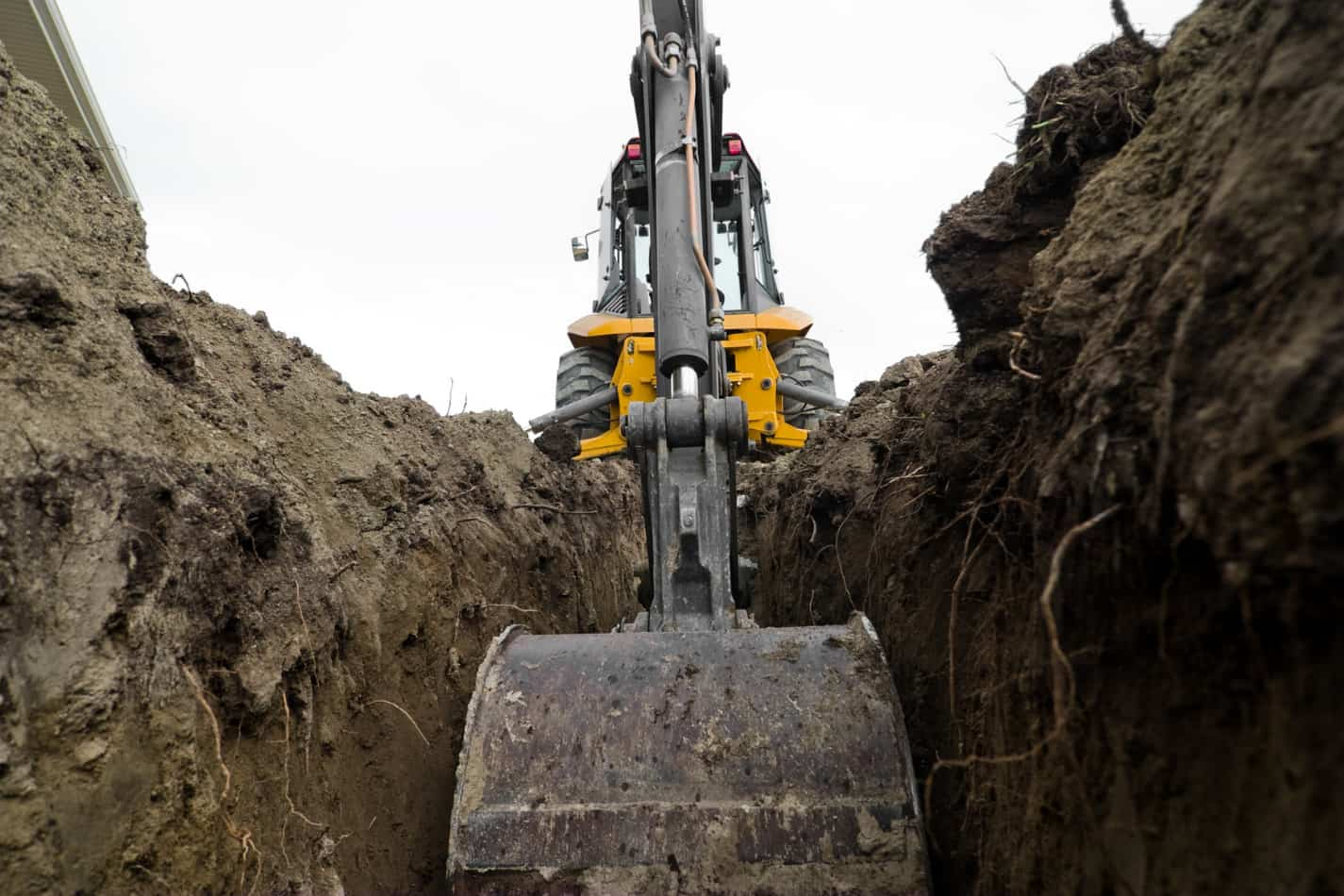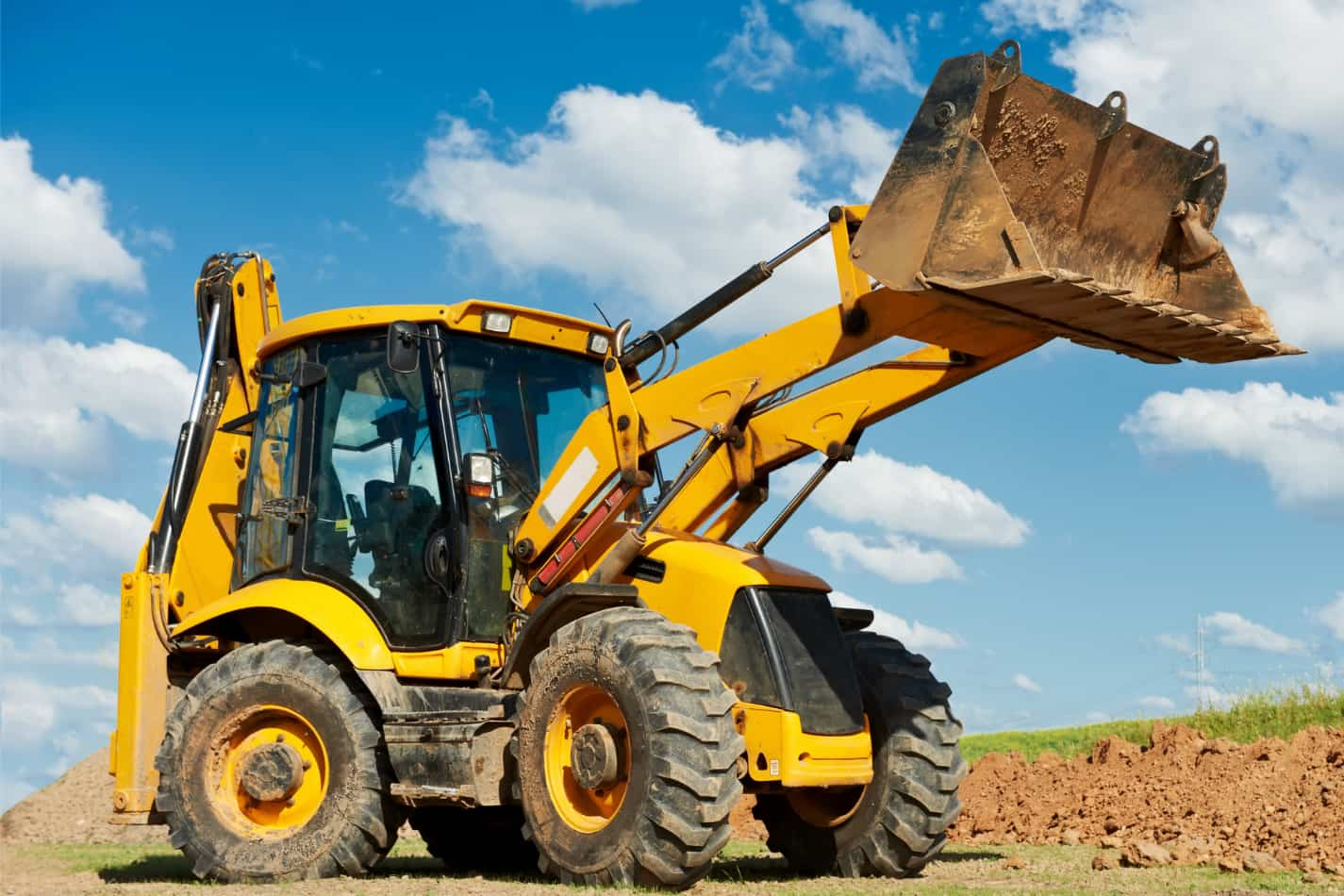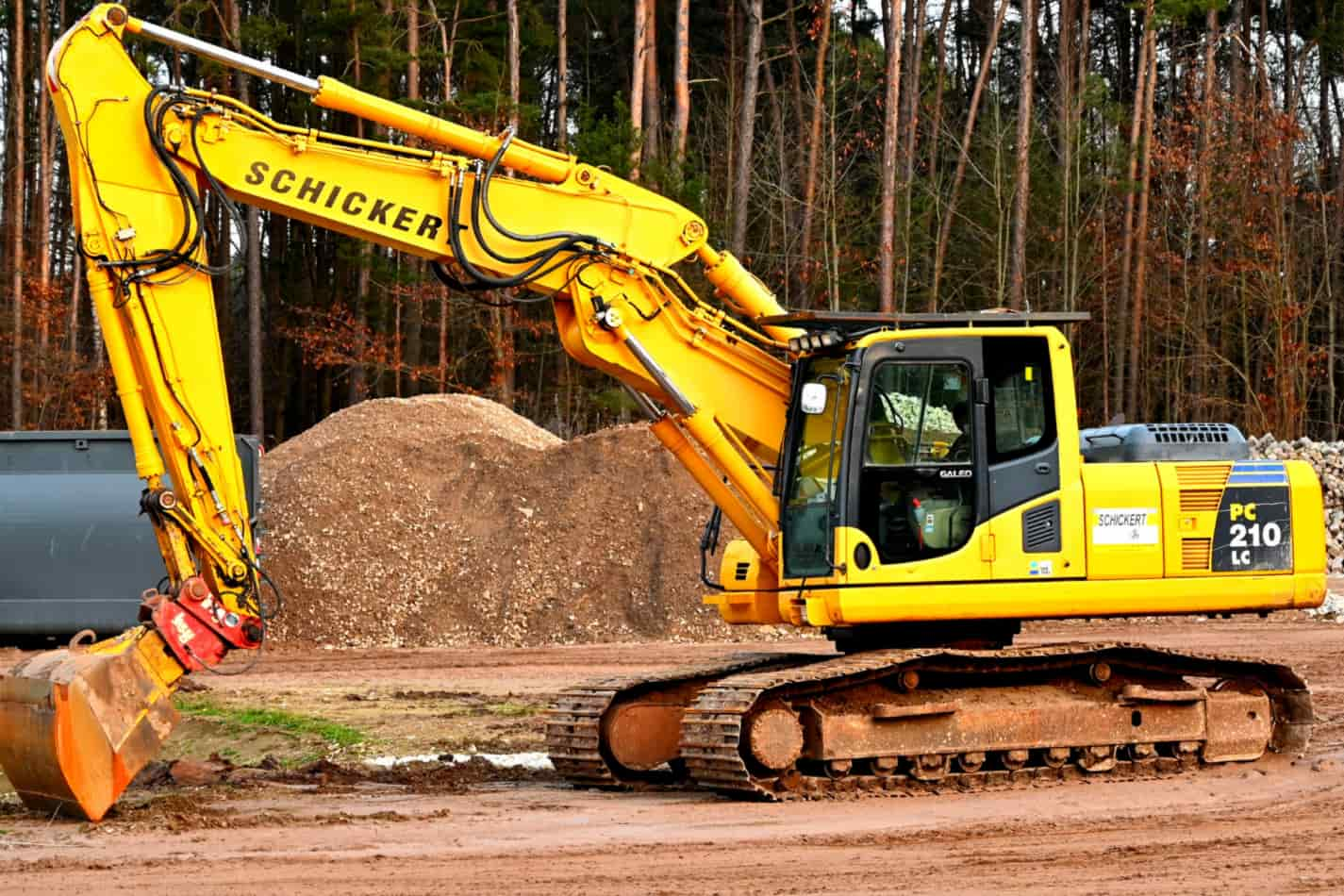Backhoes and excavators are two typical types of building site workhorses. They accomplish many of the same jobs. As a result, the names are sometimes mixed up. However, each has its own set of advantages, and one machine may be better for your next earthmoving project than the other.
And because each machine is so varied in size and design, it’s critical to know the appropriate name of the equipment you’re seeking to rent or purchase so you can get the perfect machine for your job.
But if you’re still wondering if there is a difference between a backhoe and an excavator, the straight answer is yes! Backhoes are slightly smaller than excavators, which are bigger and heavier.
Besides their difference in size, other parameters like versatility and rotation differentiate a backhoe from an excavator. Continue reading to learn more.

What is a backhoe?
A backhoe loader is a multipurpose piece of machinery that combines three hydraulically powered components into one powerful machine: a tractor, a loader, and a backhoe. They are also known as backhoe loaders since they have a boom, stick, and bucket in the rear and a huge loader in the front.
Backhoes can dig to depths of 12 to 16 feet on average, with some digging as deep as 19 feet 6 inches. On uneven ground, their outriggers give excellent stability. Backhoes have a restricted rotation range of roughly 200 degrees.
They can perform a wide range of jobs thanks to several attachments. Road brooms, rakes, hammers, drills, forks, plow blades, compaction wheels, plate compactors, drum compactors, and breakers are among the attachments.
What is an excavator?
Excavators are large excavating machines with a bucket, sticks, and boom. They’re used for breaking and dredging, mining, demolition, pile driving, in addition to digging.
Excavators can be grouped based on their weight into the following classes;
- Large excavators: > 90,000 pounds.
- Standard excavators: 22,000- 90,000 pounds.
- Midi excavators: 13,000 – 22,000 pounds.
- Mini excavators: <13,000 pounds.
Typically, the arm of an excavator digs and dumps gravel or soil while the undercarriage stays stationary because the cab can swivel 360 degrees. For this reason, excavators are sometimes referred to as 360s.
Backhoe Vs. Excavator: What are the core differences?
| Parameter | Backhoe | Excavator |
| Rotation: The rotation ranges of backhoes and excavators differ, making them extremely special equipment from an operator’s perspective. | The arm of a backhoe can only pivot roughly 200 degrees. | An excavator operator can spin the whole machine’s chassis and arm in a complete circle of 360 degrees. |
| Versatility: In terms of adaptability, the backhoe and excavator are significantly different. | Though both machines have a variety of attachments, the backhoe has a far larger assortment and can thus do a wider range of jobs. Backhoes can also be operated on roadways, making them a superior option for projects with many job site locations. | |
| Size: This constitutes the main difference between the two pieces of equipment. | Backhoes are slightly smaller. | Excavators are bigger and heavier, |
| Projects | Backhoe is ideal for snow removal, farming, loading operations, and medium-scale building and excavation projects since it is smaller and more versatile. | Mining, demolition projects, driving piles, drilling shafts for rock blasting, and other large-scale industrial operations are often better suited for excavators. |
Backhoe vs. Excavator: How to choose the ideal machine for your project.
How do you pick the proper earthmoving machine for your project when both a backhoe and excavator can do some of the same things? It all depends on the Jobsite and the task at hand.
Make a list of your needs and objectives before you start shopping for equipment, including the general purpose of your project, the size and condition of your job site, the many duties required, and your budget.
Also, when deciding between covered and open cab machinery, keep in mind the time of year and any potential risks on the job site. Some backhoes and excavators come with extra conveniences like air conditioning or a built-in radio for added comfort, depending on the model you pick.
You want to take into account the following factors while picking between an excavator and a backhoe loader.
- The scope of your project should be reflected in the size of your machine. An excavator is likely to be more useful if you’re working on large-scale construction, excavation, or demolition jobs requiring a lot of mechanical power. If your job is smaller, a backhoe can be a good option.
- Mobility: The backhoe has the benefit of traveling quickly over a project site and operating at speeds of up to 25 mph on roadways. You’ll have an easier time operating a backhoe if your job is spread out and you need to execute duties in separate places.
- Project tasks: Some activities, such as excavating, may be completed with either a backhoe or an excavator, but others need just one of the two machines. Examine the precise jobs and attachments you anticipate needing on your project and ensure that your selected equipment is capable.
- Working environment: The lightweight tread of a mini excavator will suit finished job sites or work sites with soft ground, while the toughness of a backhoe loader will benefit more harsh areas. With controlled mobility and limited swing action, a mini excavator can reach regions that a backhoe cannot, such as interior work sites or outdoor sites with noise laws and compact, difficult-to-navigate areas.
Because some compact excavators feature tracks instead of wheels, they are generally the safest choice for job situations that require more traction. This is especially crucial to remember if you’re working outside during the winter or when it’s raining heavily.
Notes! If you’re still unsure about which machine is best for your job, try chatting with a heavy equipment expert directly. Someone familiar with the intricacies of both machines, as well as their many attachments, may examine your site designs and provide an expert suggestion as to which of these machines is best for you.
Thanks for reading to the end. We hope you learned.




